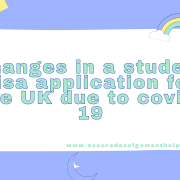Questions
1 Define the following terms as they relate to marketing.
a. Buyer Behaviour
b. Customer satisfaction
c. Marketing
d. Marketing Mix
e. Marketing Objectives
f. Marketing Opportunities
g. Marketing Plan
h. Market Segment
i. Marketing Strategy
j. Organisational Policy
k. Organisational Procedure
l. Products
m. Product Life Cycle
n. Promotion
o. Services
p. Target Audience
q. Target Market
2 Explain in your own words what the marketing concept is.
3 Select an industry with which you are familiar and list at least three (3) of the typical
PRODUCTS that it offers to sell to customers.
4 Select an industry with which you are familiar and list at least three (3) of the typical SERVICES that it offers to sell to customers.
5 Describe the SEVEN (7) elements of the 7P marketing concept.
6 Explain in what situations you would use each of the following marketing concepts.
1. 4Ps
2. 5Ps
3. 7Ps
7 Marketers further classify products based on how consumers go about buying them. Provide an explanation for each of the following product types, using an example where appropriate.
Convenience products
Shopping products
Specialty or Luxury products
Unsought products
8. Provide an explanation and example for each of the following THREE (3) main forms of product positioning strategy.
Consumer Positioning
Competitive Positioning
Majority Fallacy Strategy
9 Using the Australian and New Zealand Standard Industrial Classification (ANZSIC) as a reference, list at least five (5) of the industries that make up the Australian services sector.
10 Outline the key elements to be included in an organisational Pricing policy.
11 Provide a definition of pricing strategy.
12 Explain each of the following pricing strategies:
a. Premium Pricing
b. Penetration Pricing
c. Cost Plus Pricing
d. Promotional Pricing
e. Price Skimming
f. Perceived Value Pricing
g. Standard Cost Pricing
13 For each of the following forms of marketing communications, describe their function and provide at least two (2) examples for each from.
Mass Communication
Target Communication
In-store Communication
One-to-one Communication
14 Mach each of the following forms of Marketing promotion with their correct definition.
Promotional Method Answer Definition
1. Advertising
A. Is the building of good relations with the company’s various publics by obtaining favourable publicity, building up a good ‘corporate image’, and handling or heading off unfavourable rumours, stories, and events
2. Direct Marketing
B. Is personal communication about a product between target buyers and neighbours, friends, family members and associates
3. Online marketing C. Is the short-term incentives to encourage purchase of a product or service
4. Personal Selling
D. A form of one-to-one communication, as well as a step beyond mere marketing communication
5. Public Relations
E. Any paid form of non-personal presentation and promotion of ideas, goods or services by an identified
sponsor
6. Sales Promotion
F. Refers to direct, person-to-person communication with prospective customers the process which may take place in a sequential manner, with sales being the end objectives.
7. Word of Mouth Influence
G. Is an interactive system of marketing which uses one or more advertising media to affect a measurable response and/or transaction at any location
15 Provide a definition of each of the following marketing channels.
a. Retail
b. Wholesale
c. Dealer
d. Distributor
e. Digital Networks
f. Franchisee
g. Re-Seller
h. Mail-Order
16 Provide an explanation for each of the following THREE (3) levels of problem solving during the consumer buying process.
a. Routine problem solving
b. Limited problem solving
c. Extended problem solving
17 Explain the concept of Maslow’s Hierarchy of needs.
18 Provide an explanation for each of the following marketing concepts.
a. Customer Service variables
b. Product / Service variables
c. Distribution variables
d. Pricing variables
e. Promotional variables
19 Identify and describe at least four (4) internal factors which may impact on the marketing mix.
20 Identify two (2) possible ways of improving marketing performance.
21 What is ROMI and how can it be used when monitoring the marketing mix against marketing performance?
22 Outline at least three (3) aspects that should be considered in relation to the marketing mix and any evaluations that are performed.
23 If the marketing mix requires adjustment, what key items must be considered before making a change?
24 Explain how each of the following legislation impacts on marketing activities.
A. Australian Competition and Consumer Act 2010
B. Privacy Act 1988
C. Spam Act 2003
25 Outline the key reasons statistics are used in marketing.
26 For each of the following statistical techniques used to gather marketing information, outline what they are and explain how they are used and applied.
a. Focus Groups
b. Observation
c. Interview
d. Search online
e. Survey
f. Non electronic materials
g. Literature review
27 Outline at least FOUR (4) methods that can be used to present Marketing data.
28 Explain how marketing costs and revenue can be used to establish efficiency in your marketing plan.
29 Explain how you could establish effective communication and performance in the marketing team.
30 List at least THREE (3) ways you can monitor marketing performance.
31 Identify key stakeholders in the marketing mix and explain their roles and responsibilities.
32 If your product is priced at $12.50 and your competitor reduces a competing product by 10%, what is the maximum new price you should implement to remain competitive?
ASSESSMENT 2 – PROJECT – STUDENT INFORMATION
This information is to be handed to each student to outline the assessment requirements.
You will be required to undertake ONE (1) assessment task in order to successfully complete this
assessment. This Assessment will require you to demonstrate evidence of your ability to:
1. Report on activities undertaken to establish a marketing mix in an organisation, including information on each element of the mix, such as:
• customer service levels
• product or service distribution
• product or service pricing
• additional products or services, if any
• Product or service promotion
This Assessment Project can be based on either a Business idea of your own choice; your current
workplace or on the scenario listed in Appendix One.
In order to complete this assessment project, you are able to work either individually or in groups of
between 2 and 4 students providing each team member submits an individual report. Identical
copies of a report will not be accepted for marketing.
1. MARKETING MIX REPORT
You are to prepare a report based on any one of the following scenarios:
• A Business idea/opportunity of your own choice
• A Business/organisation you are familiar with
• Your current workplace
• The Cupcake Bar scenario outlines in Appendix One
Your report will need to outline the activities you and your marketing team have undertaken to establish
a marketing mix (for your chosen organisation) based on the development of a product or service offer.
The chosen offer can be either based on a new product/service or on the extension of an existing
product or service.
The particular activities you are expected to report on should include the following:
Part 1
a. A description of the product or service
b. How price will be determined
c. How the product /service will be promoted
d. What distribution channels will be used to get your product / service to customers
Part 2
a. The impact of changes to marketing mix variables or customer service levels
b. Events in the business, community or the world that could force a review of revenue and / or costs
Part 3
1. Criteria used to segment the market including reference to the following:
1.1. Geographic
1.2. Demographic
1.3. Behavioural
1.4. Psychographic
2. Specific groups of customers marketing campaign is targeting
3. Proposed methods to collect statistical data including actual statistical data on:
• Segmentation,
• Customer targeting
Part 4
1. Events and / or activities that may result in customers changing their perception of your product or service. Evaluation of variables against chosen organisations:
Your report should be based on the above criteria.
Your submission must be prepared using business software such as Microsoft Word, Excel, PowerPoint, or similar software. Hand written submissions – represented in filling templates and notes are acceptable.
Your documents should be professionally formatted and include:
a. Your Name
b. Your Student ID
c. Unit Code
d. Assessment Number (i.e. BSBMKG542 Assessment 2)
Resources: Refer to Resources section at Page 2.
ASSESSMENT 2 – PROJECT – ASSESSOR INSTRUCTIONS
These instructions must be followed when assessing the student in this unit. The checklist on the following page is to be completed for each student. Please refer to separate mapping document for specific details relating to alignment of this task to the unit requirements.
Each student is required undertake ONE (1) assessment task in order to successfully complete this
assessment. This Assessment will require you to demonstrate evidence of your ability to:
• Report on activities undertaken to establish a marketing mix in an organisation, including
information on each element of the mix, such as:
o customer service levels
o product or service distribution
o product or service pricing
o additional products or services, if any
o Product or service promotion
You are to prepare a written report based on any one of the following scenarios:
o a Business idea/opportunity of your own choice,
o A business/organisation you are familiar with
o Your current workplace
o The Cupcake Bar in Appendix One
In order to complete this assessment project, you can work either individually or in groups of between 2
and 4 students. Each student will be required to submit the following documents as part of the project
Assessment tasks required:
• Marketing Mix Written Report
The Trainer/Assessor may also modify the scenario to another product or service if it suits a particular
student cohort. However, you must provide the same details as shown in the Scenario in Appendix One
(i.e the type of information).
In setting up this assessment, please:
1. Set a date for this assessment
2. Advise students of the topic
3. Hand out and explain the Student Information
4. Assess the candidates’ submissions / observations using the following checklist
You are to ensure each assessment is as conducted in a simulated work environment. This will require
you to:
o Allow for distractions such as background noises, ringing telephones, etc. As this is a business service unit, a simulated environment may include a closed meeting room, office, or even the classroom (if it represents a working office environment).
o Ensure each student is dressed appropriately / professionally
o Ensure you act as a supervisor, and do not interfere with the assessment
o In the event that the assessment is looking to impact on the safety of a student or bystander,
the assessment must be stopped immediately
ASSESSMENT 2 – PROJECT – ASSESSOR CHECKLIST
This checklist is to be used when assessing the students in this task. This checklist is to be completed for each student. Please refer to separate mapping document for specific details relating to alignment of this task to the unit requirements.
Assessor Instructions
Please refer to the detailed instructions as outlined in the Assessor Instructions page (Previous) for
boundaries in assessing this project.
Each task on this checklist must be found Satisfactory, to mark the assessment outcome as “Satisfactory”.
Please complete below
Student Name:
Student ID No:
Marketing Mix Written Report attached
In undertaking this assessment, did the
student:
Attempt 1:
___________
(Date)
Satisfactory
Attempt 2:
__________
(Date)
Satisfactory
Attempt 3:
__________
(Date)
Satisfactory
Prepare a written report on the activities
undertaken to establish a marketing mix for
their chosen organisation
Yes No Yes No Yes No
• Part 1
– A description of the product or service
– How price will be determined
– How product / service will be promoted
– Distribution channels used
Yes No
Yes No
Yes No
Yes No
Yes No
Yes No
Yes No
Yes No
Yes No
Yes No
Yes No
Yes No
• Part 2
– Impact of changes on customer service
levels
– Business, community or world events
impacting business
Yes No
Yes No
Yes No
Yes No
Yes No
Yes No
• Part 3
– Criteria used to segment the market
o Geographic
o Demographic
o Behavioural
o Psychographic
– Specific groups to be targeted
– Methods of collecting statistical data
o Segmentation
o Customer targeting
o
Yes No
Yes No
Yes No
Yes No
Yes No
Yes No
Yes No
Yes No
Yes No
Yes No
Yes No
Yes No
Yes No
Yes No
Yes No
Yes No
Yes No
Yes No
Yes No
Yes No
Yes No
• Part 4
Events / activities resulting in customer
change of perception of product/service
ASSESSMENT 3 – OBSERVATION – STUDENT INFORMATION
This information is to be handed to each student to outline the assessment requirements.
You will be required to undertake ONE (1) assessment task in order to successfully complete this
component. This Observation Assessment will require you to demonstrate evidence of your ability to:
• Report on the success of marketing mix activities developed, including coverage of any necessary
adjustments made
Observation Instructions
Now that you have completed your initial report, you are ready to launch your product/service to the
selected target market (s). In reality, you would be required to allow between 4 weeks and 3 months to
be able to determine the success or otherwise of the marketing mix activities your team have developed
and implemented.
So for the purposes of the next phase of this Assessment, you are now required to assume (refer to
marketing assumptions below) that 3 months have passed since the initial launch and you are ready to
report to Senior Management as to the success (or otherwise) of the marketing mix activities you have
undertaken and any necessary adjustments you suggest need to be made based on at least ONE (1) of
the marketing assumptions listed below:
Available Information
The initial results reported after the launch have indicated a number of elements that will require further
consideration for adjustments to the marketing mix
• Sales have been slower than initial forecast (assume approximately 10% lower)
• Customer feedback indicates pricing is approximately 5% higher than the equivalent competitor
product/service
• Promotional Response rates are averaging 2% (for direct mail) and 20% open rate (for email)
• Some distributors (if applicable) have not been as engaged with the new product/service as was
initially indicated
ASSESSMENT TASK 1: MARKETING MIX ADJUSTMENT RECOMMENDATIONS
You and your team are now ready to report back to Senior Management (Your Trainer) as to the success (or otherwise) of the marketing mix activities you have recommended and any necessary adjustments you suggest need to be made.
a. Identify the changes that need to be made to your marketing mix based on the available information.
b. Establish recommendations to adjust the marketing mix.
Prepare a report to management using Microsoft PowerPoint or another suitable presentation based
computer software program. Your report must address your response to all of the items listed in the
“Available Information” above. If you are working as part of a team, each team member must produce
their own report.
The presentation should include the following content:
• A summary of the elements in your initial report which can be used to establish the context of your
selected organisation and specific marketing mix elements including:
1. SWOT and PESTLE Analysis
2. Product, Price, Promotional and Distribution variations
3. Expected customer service levels based on changes to any of the marketing mix variables
4. Evaluation of these variables against the chosen organisations marketing objectives, target market characteristics and desired positioning
5. Outline the proposed methods to collect statistical data including actual statistical data on:
– Market and customer segmentation
– Customer targeting
– Positioning including:
– Geographic components
– Demographic components
– Behavioural components
– Psychographic components
• The marketing assumptions (at least ONE (1) that you have used to base your marketing mix
adjustments on)
• Recommendations for the proposed adjustments made to any (or all) of the marketing mix activities
developed and based on the assumptions made
DOCUMENTATION TO BE SUBMITTED to complete this Assessment:
1. Marketing Mix Adjusted Recommendations (PPT Presentation)
2. Presentation Observation Checklist – SA Tool
Your submission must be prepared using business software such as Microsoft Word, Excel, PowerPoint or similar software. Hand written submissions – represented in filling templates and notes are acceptable.
Your documents should be professionally formatted and include:
a. Your Name
b. Your Student ID
c. Unit Code
d. Assessment Number
APPENDIX ONE: PROJECT SCENARIO
The Cupcake Bar (TCB) was established in 2008 by Karen Cakey as a small internet-based cupcake
business. Drawing inspiration from New York’s iconic Magnolia Bakery, Karen’s business philosophy
sprang from a passion for creating the perfect cupcake experience in terms of taste, texture and design.
As word spread to friends, Karen started receiving requests for parties and functions. Requests turned
into orders and demand eventually outgrew what she could supply from her home kitchen. So, in 2010,
together with her partner Sam Sponge, they opened up their first retail store and baking facility at Collins
Place in Melbourne’s CBD.
Over the past 7 years Karen and Sam have been working together to grow a team of young passionate
and dedicated staff to create a business that is not only an awesome place to work in, but is constantly
innovating to create new cupcake flavours, styles and types. All of which are designed to provide the
customer with a total cupcake and more experience.
The businesses food philosophy centres on the belief that freshness and quality are paramount to
ensuring positive word of mouth from their target customer groups. Repeat purchases are encouraged
via the TCB Cupcake Royalty Rewards program. By registering on-line and paying a nominal annual fee
of $25, loyal customers are rewarded with regular buy one get one free offers and discounts on cupcake
and coffee purchases.
TCB also promotes itself by offering monthly Cupcake Baking and Decorating workshops as well as
quarterly Masterclasses.
In addition Karen has developed and published a TCB Cookbook focusing on gluten free and vegan
options as well inclusion of some of the classic favourites like Red Velvet and a range of new unique
options.
Retail food is an extremely competitive environment so these initiatives all provide the business with
valuable marketing data regarding the demographics of their customers as well as ensuring diversification
outside of the core Cupcake business.
An overview of the current TCB business marketing profile is contained on the following pages. This
profile is structured using the standard 4P’s marketing framework of:
• PRODUCT • PRICE
• PLACE • PROMOTION
Product Offering:
Core Range:
TCB offers a standard/everyday range of cupcakes which include the following flavours in two sizes –
standard and small.
• Vanilla Swirl • Double Chocolate • Carrot
• Devil’s Food Cake • Cookies & Cream • Raspberry White Chocolate
• Salted Caramel • Red Velvet • Sticky Date
Product bundles include:
Gift Boxes:
Are available for 4, 6 or 12 Standard cupcakes or 10, 15 or 30 Small cupcakes
Cupcakes Towers:
Available in 3, 4, 5 or 7 Tiers and ideal for Birthdays, Anniversaries or family celebrations
Corporate Branding:
Customised and edible branded with a company logo cupcakes to celebrate product launches or special
events
Mini Cakes:
Designed to complement all standard cupcakes, top the Cupcake Towers and provide a larger version
for birthdays or other celebrations.
Seasonal Range Extensions:
A new seasonally based range extension concept is currently being considered and it is proposed to be
themed as follows:
Season: Range Extension Theme
Winter Winter Wonderland Collection
Spring Spring Fever Collection
Summer Summer Lovin’ Collection
Autumn Autumn Breezes Collection
The launch for each Seasonal range would be required take place at least 4 weeks prior to start of the
specific season here in Australia.
Each range could potentially consist of between 6 – 8 cupcake types to suit the particular seasonally
based time period.
The proposed product selections for each of the seasonal ranges are currently in the final stages of
development and testing.
Each Seasonal product selection will consist of the following flavour types:
Winter Wonderland Collection
• Nutella Trifle • Hot Chocolate Marshmallow
• Cinnamon Donut • Irish Coffee
• Black Velvet • Maple Bacon
• Blueberry Bliss • Coconut Truffle
Spring Fever Collection
• Peanut Caramel Delight • Peach Velvet
• Berry Blooms • Espresso Martini
• Apple Crumble • Pistachio Pear
• Choc Ripple • Berry Limeade
Summer Lovin’ Collection
• Pineapple Fizz • Lemon Delicious
• Orange Tang • Pimms Passion
• Lime Spider • Apple Blends
• Vegan Vanilla • Island Coconut
Autumn Breezes Collection
• Blue Velvet • White Heaven
• Ripe Raisin • Coconut Rough
• Spicy Plum • Cinnamon Spice
• Rasberry Lime • Creamy Soda
Target Market/s:
Primary:
The primary target audience is Women aged 18 – 45
Secondary:
The secondary target audience are Students (Male & Female) aged 16 – 24
Pricing:
Pricing for each of the ranges are outlined below:
Cupcake Type Standard RRP
incl. gst
RRP incl. Gst
with volume
discount level 1
RRP incl. Gst with
volume discount
level 2
Standard $4.50 $4.25 $4.00
Small $2.50 $2.25 $2.00
Seasonal – Standard $5.50 $5.25 $5.00
Seasonal – Small $3.50 $3.25 $3.00
Mini Cakes $25.00
Corporate Branding Add $1.00 to each cupcake for decoration etc.
Cupcake Bundles Core Range Seasonal
Gift Boxes – 4 standard cupcakes $18.00 $22.00
Gift Boxes – 8 standard cupcakes (Discount level 1) $34.00 $42.00
Gift Boxes – 12 standard cupcakes (Discount Level 2) $48.00 $60.00
Gift Boxes – 10 small cupcakes $25.00 $22.50
Gift Boxes – 15 small cupcakes (Discount level 1) $33.75 $48.75
Gift Boxes – 30 small cupcakes (Discount Level 2) $60.00 $90.00
Towers – 3 Tiers (15 Standard cupcakes + $10 stand)
(Discount level 2)
$70.00 $85.00
Towers – 4 Tiers (24 Standard cupcakes + $15 stand)
(Discount level 2)
$106.00 $135.00
Towers – 5 Tiers (30 Standard cupcakes + $20 stand)
(Discount level 2)
$140.00 $170.00
Towers – 7 Tiers (40 Standard cupcakes + $25 stand)
(Discount level 2)
$185.00 $225.00
Towers – 3 Tiers (20 Small cupcakes + $10 stand)
(Discount level 2)
$50.00 $70.00
Towers – 4 Tiers (30 Small cupcakes + $15 stand)
(Discount level 2)
$75.00 $105.00
Towers – 5 Tiers (40 Small cupcakes + $20 stand)
(Discount level 2)
$100.00 $140.00
Towers – 7 Tiers (60 Small cupcakes + $25 stand)
(Discount level 2)
$145.00 $205.00
Distribution (Place):
TCB currently have a total of 7 sites across Melbourne as follows:
• 3 CBD sites at:
o Collins Place
o Melbourne Central
o Southbank
• 4 suburban shopping centre sites including:
o Eastland (Ringwood)
o Southland (Cheltenham)
o Northland (Preston)
o Highpoint (Maribyrnong)
They also have a small office located in Richmond where the Executive, Marketing, Finance and Logistics
teams are based.
The TCB owners are currently investigating further expansion into an additional 4 suburban sites with a focus on the eastern and southern suburbs, both of which are experiencing stronger store sales growth than the CBD and northern & western suburbs.
Promotion:
Until recently, TCB has utilised social media, word of mouth and localised store based promotional
activities, including the Melbourne Entertainment Book, to help drive sales.
However with the advent of the planned additional stores, a critical mass in terms of turnover and the
need to continuously innovate the product offering to keep it fresh and contemporary, Karen and Sam
have had to review their current business plan.
They have identified a gap in the strategic marketing approach to their business and so have engaged
an Advertising and Media agency, Ad Media Pty Ltd to provide much needed marketing and advertising
expertise to their business. The agency are currently undertaking a strategic analysis of the suitability of
each of the following media vehicles as part of TCB’s future advertising planning process.
Print: Newspaper (Local) Digital: Facebook
Print: Magazine Sales promotion
Print: Outdoor Radio
Print: Direct Mail Cinema
Digital: Microsite Point of Sale (POP)
Business Financials:
Total budgeted Business Sales turnover for the coming financial year across the 7 TCB stores has been
set at $4.8 million.
The total marketing budget for this financial year has been set at $480k, which represents 10% of the
total annual business sales turnover.
Please refer to your Trainer/Assessor if you require any additional information on this Scenario.

 Identify and Establish Documentation Standards
Identify and Establish Documentation Standards 








